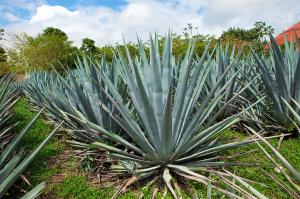Introduction
Sage plant is a perennial herb that belongs to the mint family. It is scientifically known as Salvia officinalis and is a popular culinary herb that has been used for centuries due to its distinct flavor and medicinal properties. Sage plant is prevalent in the Mediterranean region and is now cultivated all over the world. In this article, we will dive into the details of sage plant, its uses, and benefits.
Appearance and habitat
Sage plant is a woody-stemmed shrub that grows up to two feet tall. The leaves are elongated, soft, furry, and have a grayish-green color. The plant produces purple or blue flowers that are arranged in whorls. Sage thrives in well-drained soils and requires full sunlight. It is usually found in the wild in the Mediterranean region, but now it is also found in North America, Europe, and Asia.
Uses of sage plant
Sage plant is a useful herb that has several culinary and medicinal applications. The leaves of the sage plant are used in cooking to add flavor to various dishes such as soups, sauces, and meat recipes. Sage has a savory, slightly bitter taste that goes well with other herbs like thyme and rosemary. Additionally, sage is used as a natural food preservative due to its antimicrobial properties.
In traditional medicine, Sage is used to treat a range of ailments such as digestive problems, inflammation, and sore throat. The herb has anti-inflammatory and anti-bacterial properties that help to reduce inflammation and fight bacterial infections. Furthermore, research shows that sage may even have anticancer properties.
Health benefits of sage plant
Apart from its culinary and medicinal uses, sage plant has numerous health benefits. Sage is rich in essential oils, flavonoids, and phenolic acids that have antioxidant properties. These compounds help to neutralize free radicals, which can damage cells and cause chronic diseases. Additionally, sage has been found to regulate blood sugar levels, improve brain function, and support healthy digestion.
Sage's anti-inflammatory properties may also be useful in reducing symptoms associated with certain inflammatory conditions like arthritis. Moreover, some studies suggest that sage could have a positive impact on memory and may help to alleviate symptoms of Alzheimer's disease.
Conclusion
In conclusion, sage plant is a versatile herb that has been used in traditional medicine and cooking for centuries. It has many health benefits, including antioxidant, anti-inflammatory, and antimicrobial properties. Sage enhances the flavor of many dishes and is a natural food preservative. It is essential to use caution when using sage as a medicinal herb and consulting a healthcare provider before incorporating it into your diet.

 how many times do yo...
how many times do yo... how many planted tre...
how many planted tre... how many pine trees ...
how many pine trees ... how many pecan trees...
how many pecan trees... how many plants comp...
how many plants comp... how many plants can ...
how many plants can ... how many plants and ...
how many plants and ... how many pepper plan...
how many pepper plan...






























